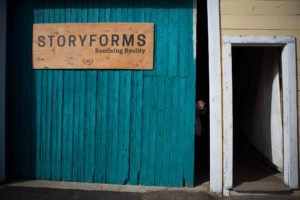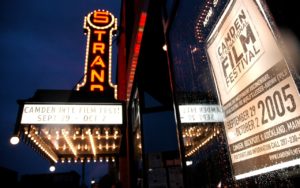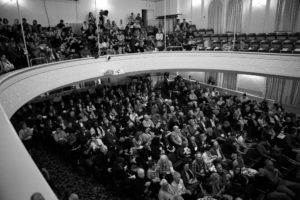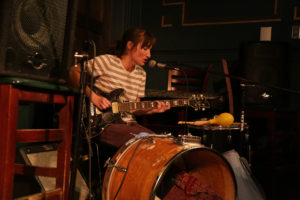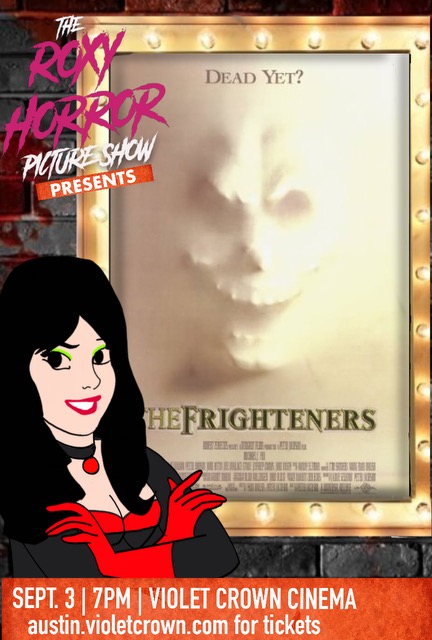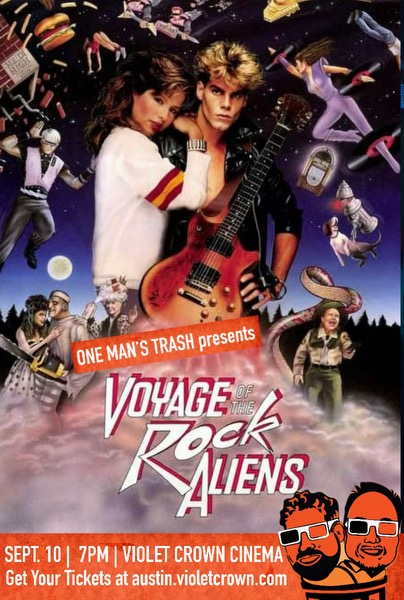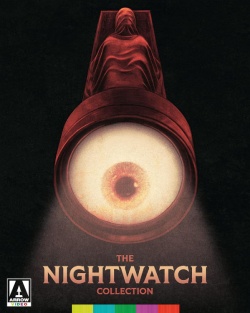Non-fiction is an ever-growing and increasingly popular field. There are now various types of documentaries utilizing innovative techniques and artists are also finding new ways to express the theme of creative non-fiction. At the forefront of this wave is an event called the Camden International Film Festival which is in its fourteenth year in the great state of Maine. The festival is one of many programs under the Points North Institute that is paving the road for up and coming filmmakers and artists to refine and showcase their work in creative non-fiction. I was able to discuss the festival and some of the other institute’s programs with the founder Ben Fowlie and the senior programmer Samara Chadwick.
London: Thank you for agreeing to the interview. Could you please introduce yourselves and your roles?
Ben Fowlie: My name is Ben Fowlie and I am the executive director of the Points North Institute. We all do a myriad of things here. We are a pretty small organization in comparison to some of the larger institutions in the country or in the world. My day to day as the executive director is that I am involved with board management, maintaining the mission and the long-term vision of the organization, fundraising and development, and what I love most working with Samara on film programming and some of our artist programs that we have been expanding through the Institute for the past few years.
Samara Chadwick: I am the senior programmer for the festival. For me, it’s really a dream job in so many aspects. There is obviously the film programming side which is selecting the films and coordinating the selection committee. Maintaining this vibrant reputation of running one of the best non-fiction festivals in North America and the world. They are really beautiful works of art that are using all sorts of reality as their medium. There’s also all of our artist programs that have been expanded through the institute to be year-long programs that worked to support films that are not yet finished. That’s incredibly rewarding and working with Sean on the artist programs and on the virtual reality immersive non-fiction programming. We have this great vantage point to see all of the wider conversations that being spread across finished films and unfinished films for the different non-fiction works. So it’s a really beautiful job.
London: You mentioned virtual reality at one point, what else can fall under the purview of non-fiction?
Samara: Yeah good question. We have this segment that’s through the third year of the whole exhibition called Storyform. It’s really any non-fiction work that exists outside of a cinema-screen. So, we have sculptures, public installations, we have films that are shown as installations, and we also have offices with over a dozen 360 virtual reality pieces as well as for room-scale installations. Some of those are set up throughout the city as public installations and we also have a barn in downtown Rockland where we exhibit most of the other Storyform work. We also are very careful to orchestrate them all together so there is a wider conversation that emerges. We also feel that the best works are at this point of convergence between journalism and non-fiction storytelling and also co-creation categories with communities and new technologies. So everything from augmented reality and the hololens to Oculus. We use all sorts of different technologies and it’s expanding every year.
London: Speaking of every year. Has the festival been going on for over thirteen years now?
Ben: Yeah, this will be the fourteenth year of the festival.
Samara: Yeah, Ben started this when he was in college.
Ben:. Yeah, that’s why I don’t have a doctorate. (laughs) I struggled in school and needed to find something else. Honestly, I’m from Camden which is one of the major venues of the festival and is really the center of what we do on an annual basis. This is really a good opportunity to go and find a way to work with a community that I respect tremendously. If you are a filmmaker, avoid the infamous internship trap that a lot of students get sucked into. I figured if I was going to work for free, I might as well be doing my own job. But yeah it is fourteen years old.
London: That’s good advice. I heard about someone else who went to film school and decided to make their own production company instead of interning somewhere else.
Ben: That’s a good way to do it. You can never get ahead working for someone else in a lot of ways. This industry is built around the labor from young people who need to make connections and network. While that’s important, but for anyone who doesn’t want to go to LA and spend the next twenty years of their life building those relationships and networking, your only other option is to build something on your own like a production company or start a film festival. Kind of like business around one.
London: That’s excellent advice and I am glad that you elaborated. So, you talked about the foundation and the reason why you chose Camden. Could you also discuss why the theme of nonfiction?
Ben: Well the festival used to be just documentary and exclusively documentary but we did sneak in a few narratives here and there. Some disguised as a documentary. We like to highlight artists working around the boundaries of the form and working on news to tell “real” stories. The interest in the documentary only was because there was no model that existed before. There was no film festival in town, this was before every small town (Camden is a very small town) had a film festival. I was going into with the fact Maine had one film festival, the Maine International Film Festival, and it was well known for what I would call retrospective programming and archival-based work in the sense of dusting off the 45 millimeter print of some major Hollywood classic and sharing them with their community. My interest in documentary has been around since I was a kid. As a young kid, my dreams were either to play in the NBA or to be a national geographic photographer which were two obvious things. I know I wasn’t thinking outside the box too much. I’m about 5’11 and I don’t have great options so I found documentary photo work was a real passion of mine and travel and really just getting a sense of the broader world around. I think apart of that is just growing up in a small town and not really having the ability to travel as much as I do now or certainly not a lot of other people. So the idea of exploring the world came through photography and film in some capacity for me. That’s where my initial interest came from. The other reality was that 2004 and 2005, that’s when you started seeing films like Fahrenheit 911, Winged Migration, and SpellBound. Documentaries were really starting to bubble up on the mainstream audience and certainly around the box office annual records as potentially profitable entertainment opportunities. They really opened up the forum to a more general audience. I then realized there are documentary films out there that are not the traditional talking heads public media approach to storytelling. It was really exciting to know that there was a burgeoning group of artists out there that we could latch on to when we were starting this festival and really just grow alongside them and that’s what we have been able to do is be a leader, and supporter of this renaissance of cinematic nonfiction and creative non-fiction. We have been around since the beginning of these conversations and we have really played a supportive role. As well we have been on the sidelines and seen many of our friends, colleagues, and new artists step into this world and grow tremendously year after year. So it has been really exciting to have that front row seat over the years.
London: Yes, the field has grown quite a bit and it seems you definitely played a strong hand in it. Especially with your artist programs. Could you discuss those for a bit?
Ben: Sure, I can do an overview then Samara could jump in and give it more detail. From 2005 to 2015, we were a four-day film festival. In 2009, we launched a program called Points North Forum which focused on industry training or people looking to become filmmakers. They are one on one and focus on where the industry is going. To make a dream come true and getting out onto the circuit. With the development of the forum, we realized with our former colleague Sean who is now in San Francisco running their film society. Our interests were a desire to be a documentary filmmaker and my colleagues were producers themselves. We wanted to find a way to be more creatively involved in the creative process for filmmakers and the best way to do that for us was to double down on our commitment to developing programming that takes place outside of the festival and is really geared towards supporting and nurturing new voices in the forum. So, in 2016, we launched an umbrella organization called the Points North Institute that allowed us to invest as much as we could from an organizational standpoint in the development of these programs. Right now, the Points North Institute’s mission is to discover and nurture the next generation of non-fiction storytellers using this location which we believe is a great creative respite for artists to really drive the tone and the identity of all our programs that we’ve created since launching the institute. And Samara can now just jump into all of these programs.
Samara- I’ll give you a quick overview. What Ben says is actually so important to underline.
Anyone that comes to Camden and participated in our artist program would testify to the fact that something changes once you get here. Even though there are a lot of the top industry and top filmmakers that are present in various different ways and they are often in other festivals industry settings there is just something very human about Camden in ways that it opens up a person’s inner child in curiosity for one another. There are so many opportunities during the festival and during our artist programs to make real lasting connections. It’s hard to describe that in any tangible way except for its just so obvious and it’s just some kinda magic at work. I think the removal from the urban center, the pace of life, the scale of the festival, and the base itself allows people to really connect with each other. So what happens at the retreat each year in June is we have five projects and about five plus mentors. It’s a week and it’s a very dedicated time very much focusing on the fact that editing a film, producing a film and researching a film is very solitary work and for most filmmakers very exhausting and just really hard. What we do for the artist programs is acknowledge all the struggles and all the questioning. The creative process that accompanying the filmmakers every step of the way of making a film and so allowing people to come into that space with that vulnerability to ask questions of each other to give each other feedback in a very sincere but constructive way really brings these projects to the next level. It’s so formidable to offer this. As a filmmaker myself it’s such a rare opportunity to actually be able to do this and it doesn’t feel competitive or doesn’t feel like trying to funnel you into a kind of opportunity machine of how the formula of the industry works in the documentary. So it’s really about cultivating filmmakers as artists and creators. That leads them to the artists’ programs that happen parallel to the festivals. We have two groups of filmmakers joining up on Sundays. We have two residencies for a week leading into the festivals. Both groups are people living in beautiful homes and spending the whole week together workshopping their films. One is editing residency so they’re focusing on the book section and editing stages with the student mentors coming through well then we have expanded this year the North Star residency which also partnership with Riot and Kick starter and there we have five young people of color are coming up all have projects in development, that are just gonna kinda be infused with workshop and sessions. And also I’m training conversations around their work and getting them kind of more infused into the network of people that are here. And then obviously the biggest artist program the most famous one which is the fellowship which is also better known as the Pit. Something that we also do is unique in a sense that it’s a public pitch we have pitches of many of the major festivals but this ones open to the public which allow more affectionate relationship between the audience and projects they’re all obviously all projects that are in developments we make a point of choosing projects that are lesser known on the industry circuits that are very little funding so far and young filmmakers or second time filmmakers and so their bringing their new projects that are in developments and later developments and they pitch to the heads of the industry and the conversations happen both the pitching and the conversation feedback they get from the industry is something the audience of up to 500 people can watch and its fascinating for the audience to see the behind the scenes how people talk about films what they are interested in. It’s really a rare glimpse into of how the machinery of how all it works.
Ben: To Samara’s point. What is unique about what we do is an event like 21:55 the point state can happen anywhere in the world. Major decision makers in attendance and incredible projects pitching many for the first time ever. Those events will not be open to the public. those would be invitation only for industry and I think what we realize is that when you make these events public. It is emboldening the general audience to better understand the form and appreciate it for how challenging and difficult it really is to make this kind of work. We want them to go on Netflix and watch documentaries we also what them to realize that it probably took that filmmaker 3,4, 5, to 10 years to make that one and all of the life challenges and financial challenges on the line to make that film work that’s important to us. The best way to do that is to really highlight that complexity on the main stage. The other thing is I think it turns the table of how the industry reacts to the filmmakers and in closed-door industry events. The industry kind of outnumbers the filmmakers right? There’s this kind of wait towards you need us to do what you do so we can tell you what to do. It’s not a negative relationship but it’s a relationship of a power dynamic that just exists. But by doing it in a public setting the line becomes blurry. It forces the industry to really bring their A game and focus on really constructive criticism and not just criticism. Constructive criticism that can help filmmakers really walk away from events like this with tangible next steps, concrete next steps to move their projects forward in a meaningful way. In many ways, the filmmakers are on trial by the industry but the industry is also on trial by 500 plus people in the audience who’s looking at them to say hey what is this person talking about. So, it’s a really nice dynamic a little bit of check and balance. You can leave your egos at the door and really kind of focus on what’s important helping filmmakers get to the next step in their careers.
London: well, honestly you have answered all the questions I wanted to ask.
Samara: I just wanted to add the reason the industry comes and has allowed themselves to go through this process is that they trust our taste. We have chosen 6 projects from 270 submissions from all over the world and it is a very lengthy process where we really go back to the mandate of the institute to support young creative filmmakers who are doing things differently and working outside of the canon.
Ben: The industry comes here and the documentary community is a special thing. That’s the reason why we are so involved with it 14,15, 25 years later. I think the environment we create. When they come here they say this is kind of what we want or what we were looking for a place where we can really foster conversations around where the forms going and how we can support emerging artists whether they’re at college or their first film if they are 55 years old or 60 years old. So they embraced it and it’s really powerful to see the industry coming and saying hey this helps us do our job better. To have a better understanding of the challenges our filmmakers are facing. The mingling and mixing between the filmmakers’ industry and an audience is really a fine line.
London: I am going to ask a question that I am sure anyone coming across the interview is screaming out. How do you get involved with the program?
Samara: We have calls for admissions throughout the year. They start early in the spring for our artists’ program. We have open calls for the fellowship, North Star residency and for the editing residency and obviously, we accepted over 1600 submissions for features and shorts. We are a small team but we do try to answer emails. People can easily get in touch with us online.
Ben: Certain programs like North Star we try to keep the calls as limited as possible to kind of absorb the administrative time on our end. North Star is free to apply. A model we like to move more and more towards especially our artist programs but for now we I think we have 75 submissions and we like to see those numbers triple next year.
Samara: These are all for people in their 20’s who are non-white filmmakers of color from all around the world. Once you are excepted there are no fees and you get a travel stipend with no additional expenses. Which is also really special.
London: Wow! that’s better than most colleges. Well, that wraps up my questions. Do you have any final plugs?
Ben- The big thing this year is Gender Parity…in which we are excited about.
Samara- I think the documentary community at its core I think has an idea like curiosity, affection for the unknown. There are such great examples of eye-opening documentaries throughout the last 100 years of documentary filmmaking but I think that something is really important that’s been happening in the last few years is that acknowledging stories that are even deep into the documentary world and documentary is much more problematic than other creative industries because with our tradition it’s just a very certain type of people who have the main voices and have been telling stories on behave of the world. So I think there’s just a conscious effort on behalf of programmers and also filmmakers and funders lately to kind of acknowledge the multiple other perspectives and also come with this kind of enthusiasm like this is the world so far has been seen mostly through the perspective of white men. Like what is ahead from a new type of voices and through the way they shoot or approach a story? We took on the idea of programming parity this year in which we accomplish through across all artist programs like story form shorts there’s so much of exceptional talent out there. It wasn’t particularly hard but also as a programmer, a lot of our conversations are how interesting it is to start noticing how a certain film when shot through a Filipino crew has a different tone and to kind of embrace that. No longer can we assume there’s an idea of neutrality in storytelling but actually getting excited about you know the idea of a filmmaker brings a distinct vision to their film each time. Their background and their personal stories are part of the way they are going to tell any other story.
London: All writings is biographical as they say. Could you discuss gender parity?
Samara: Gender Parity is the idea of 50/50 it’s a bit of an artifus to have like actual 50/50 but there’s a whole movement across festivals that’s begun in a kind of in the wake of the MeToo movement and it is about equal representation of women. It’s a worldwide movement.
Ben: Google 50/50 by 2020 and there will be more information about it. A lot of women are trying to have parity by the year 2020 and so for us to have it this year is really important for us first of all. We hope it can be a beacon for other organizations to follow prior to 2020. I like to plug we have a retrospective of Vitaly Manksy who is an incredible filmmaking force for the last 30 years. An incredibly rich catalog of work he’s a Russian filmmaker now self-exiled to Latvia who has made his runs in the European film festival circuit for quite some time. We are streaming his latest film Putin’s Witnesses which is a documentary of the focus of power as Vladimir Putin takes over the country from the 90s’ 2000s’.
Samara: They are like the home movies in the offices of Yeltsin and Putin.
Ben: It doesn’t get much better than that especially when you realize what Putin and Russia have been able to do in the past 18 years. It is quite remarkable and you can see the seeds being sown in this film dating back from the 1990s’ to the 2000s’. And Samara has put together a small retrospective of his work. He will be here doing a masterclass and again globally well known especially in the circuits in the west. To have someone with that much political filmmaking experience in this climate talking about their work is really impressive and exciting. We are really thrilled to welcome him to the festival. Another plug is about half our programs will be making their North American premieres, which is exciting for us because we worked pretty hard as an organization to carve out our own identity for our increasingly more crowded fall festival. A lot of the films will be coming straight from Toronto and Venice. There are not a lot of markets for these films so it will really fun to talk about the craft as opposed to the “deal” among the filmmakers.
London: Well I think there’s enough motivation for anyone to attend the festival and check out the programs so thank you for your time and it was a pleasure to speak with you.
Ben: Thank you for having us.
Samara: Thank you.
The CIFF is an annual event that takes place in Camden, Maine and in the month of September. If you are interested in the festival or any of the other Points North Institute programs then you can check out their website.


